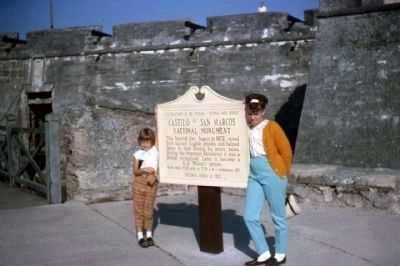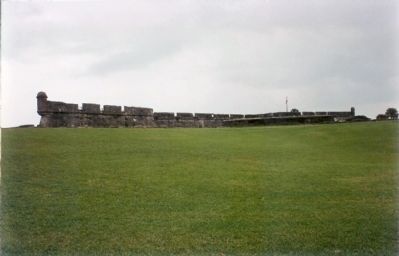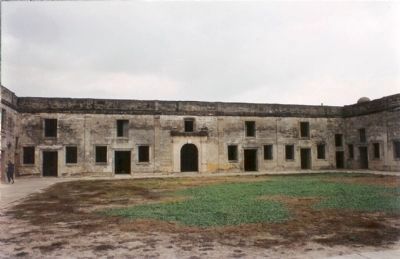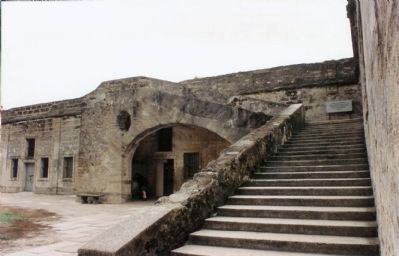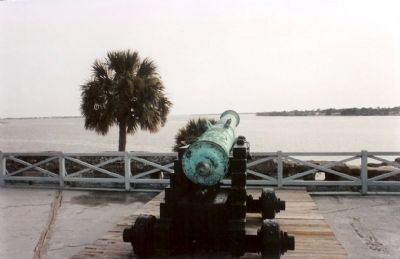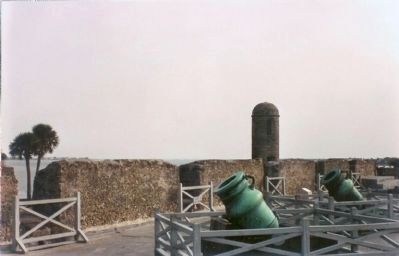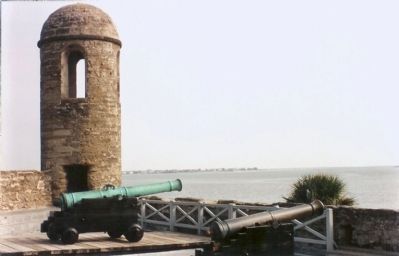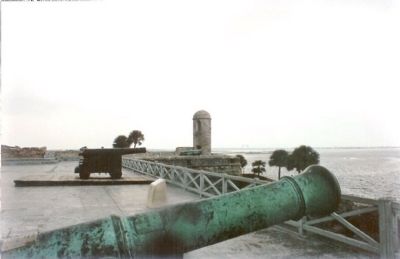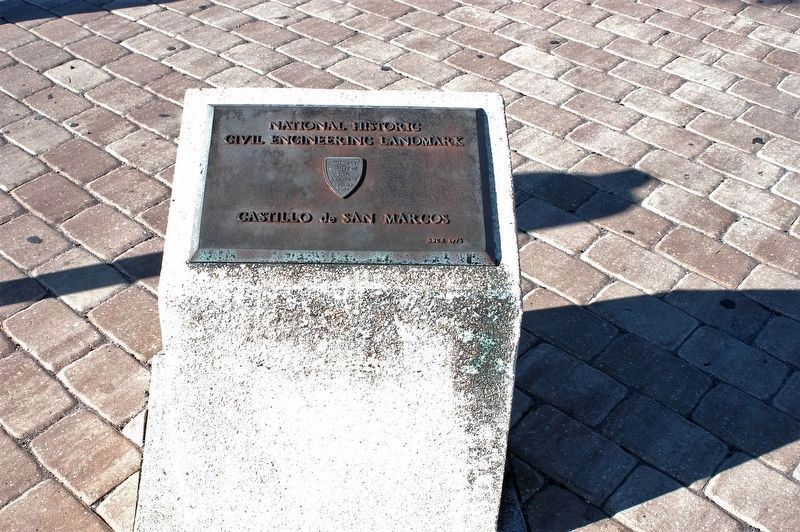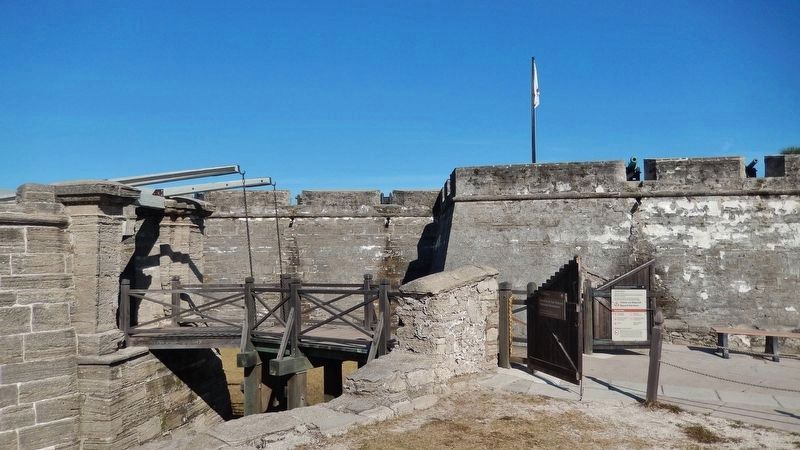Historic District in St. Augustine in St. Johns County, Florida — The American South (South Atlantic)
Castillo de San Marcos National Monument
Inscription.
This Spanish fort, begun in 1672, stood
firm against English attacks and helped
Spain to hold Florida for many years.
During the American Revolution it was a
British stronghold. Later it became a
U.S. Military Prison.
Erected by US Department of the Interior, National Park Service.
Topics. This historical marker and monument is listed in these topic lists: Colonial Era • Forts and Castles • Landmarks • War, US Revolutionary. A significant historical year for this entry is 1672.
Location. Marker is missing. It was located near 29° 53.844′ N, 81° 18.689′ W. Marker was in St. Augustine, Florida, in St. Johns County. It was in the Historic District. Marker could be reached from South Castillo Drive, on the right when traveling north. Touch for map. Marker was at or near this postal address: 1 South Castillo Drive, Saint Augustine FL 32084, United States of America. Touch for directions.
Other nearby markers. At least 8 other markers are within walking distance of this location. Firing Steps (within shouting distance of this marker); Crumbling Coquina / Piedra frágil (within shouting distance of this marker); The Cross of Burgundy: Symbol of Spain (within shouting distance of this marker); Covered Way (within shouting distance of this marker); Ramp (within shouting distance of this marker); St. Peter's Bastion (within shouting distance of this marker); Tidal Toilet / Limpiado por las mareas (within shouting distance of this marker); Under Continuous Attack / Bajo ataques continuos (within shouting distance of this marker). Touch for a list and map of all markers in St. Augustine.
More about this monument. It is likely the marker shown in the first picture has since been replaced by a more modern version.
Regarding Castillo de San Marcos National Monument. The Castillo de San Marcos, a Spanish built fort located in the city of St. Augustine, Florida, is the oldest complete masonry fortification remaining in continental U. S. Construction was started in 1672. Its 16 foot thick walls are built of coquina, a natural shellrock quarried on nearby Anastasia Island. The Castillo withstood major English attacks in 1702 and 1740.
It was known as Fort St. Mark from 1763 until 1784 while under British control. Under U.S. control it was named Fort Marion from 1821 until 1942. The Castillo was made a National Monument in 1924 and became part of the National Park system in 1933. In 1942, Congress restored the original name.
Also see . . . Castillo de San Marcos National Monument, National Park Service. Still resonant with the struggles of an earlier time, these original walls provide tangible evidence of America’s grim but remarkable history. (Submitted on March 21, 2009, by Mike Stroud of Bluffton, South Carolina.)
Additional commentary.
1.
To update the visiting fees:
Fees & Reservations
Every Kid in a Park
During the 2015-2016 school year, fourth graders and their families will be able to gain free admission, good for a year, to fee-collecting parks, public lands, and waters. A website and app will provide fun games and learning activities for kids to do at home, in school, and in parks.
While the official website and app are in development, please visit the National Park Foundation for more information about the Every Kid in a Park initiative.
Entrance Fee
The Castillo de San Marcos is considered to be a "walk-in" park. The entrance fee applies to each individual.
Adults (Age 16 and above) entrance is $10.00 - valid for 7 consecutive days.
Children (age 15 and under) are admitted free of charge but must be accompanied by an adult.
The Golden Access and Age Passports; the Castillo Annual Pass; and the Interagency Access, Annual, Military, and Senior Passes are honored for free admission in accordance with the terms specified on the card.
— Submitted January 5, 2017, by James R. Murray of Elkton, Florida.
Credits. This page was last revised on January 2, 2019. It was originally submitted on March 21, 2009, by Mike Stroud of Bluffton, South Carolina. This page has been viewed 2,108 times since then and 19 times this year. Last updated on December 21, 2018, by Cosmos Mariner of Cape Canaveral, Florida. Photos: 1, 2, 3, 4, 5, 6, 7, 8. submitted on March 21, 2009, by Mike Stroud of Bluffton, South Carolina. 9. submitted on January 5, 2017, by James R. Murray of Elkton, Florida. 10. submitted on December 21, 2018, by Cosmos Mariner of Cape Canaveral, Florida. • Andrew Ruppenstein was the editor who published this page.
